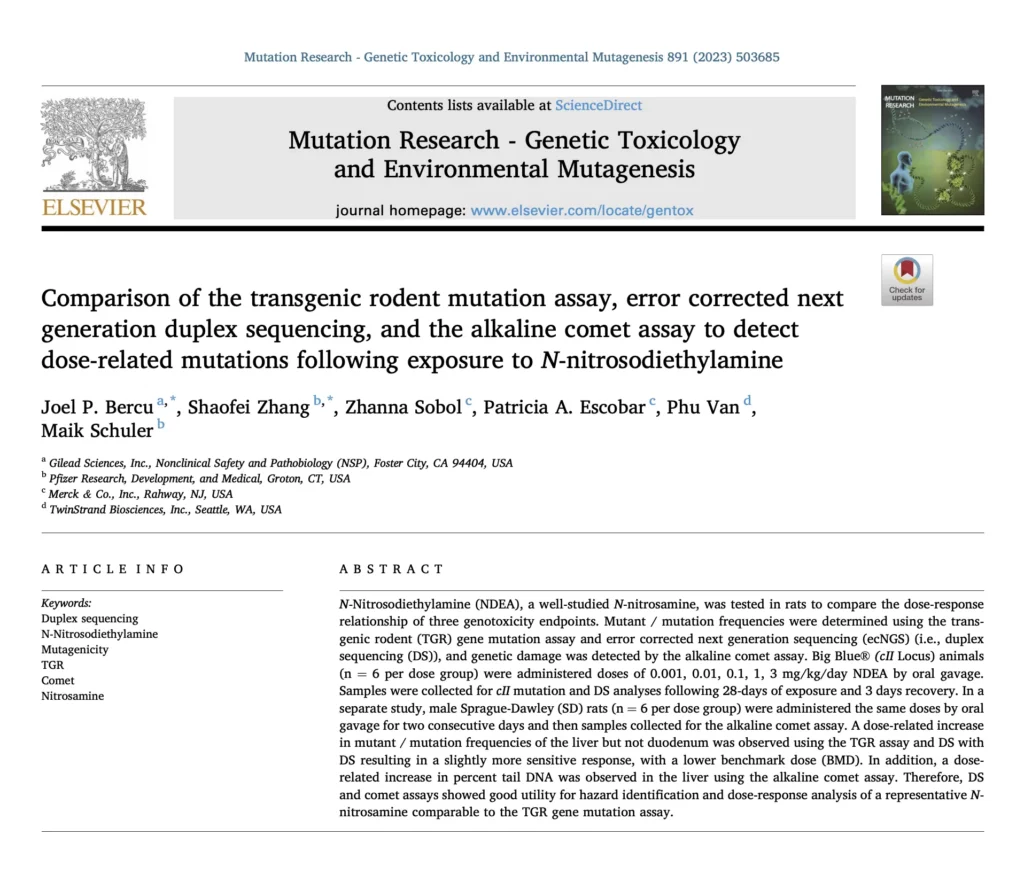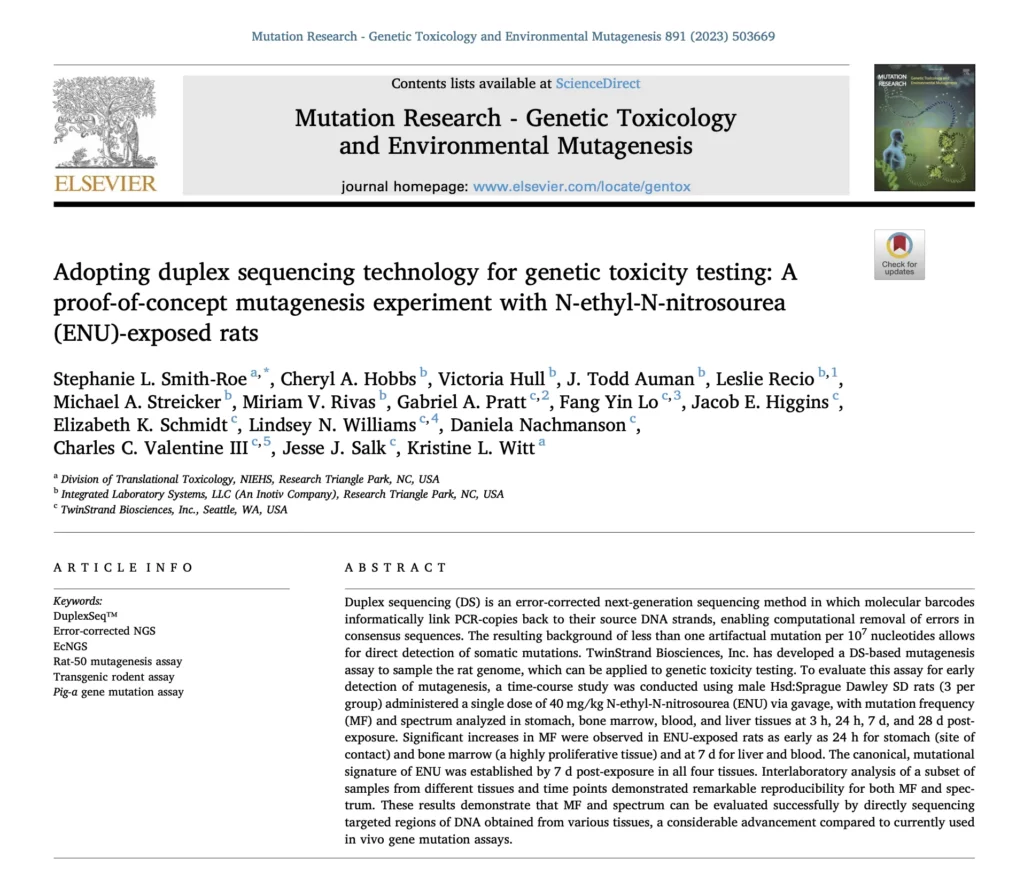The chemotherapeutic drug CX-5461 is a potent mutagen in cultured human cells

Duplex sequencing (DS) is an error-corrected next-generation sequencing method in which molecular barcodes informatically link PCR-copies back to their source DNA strands, enabling computational removal of errors in consensus sequences. The resulting background of less than one artifactual mutation per 107 nucleotides allows for direct detection of somatic mutations. TwinStrand Biosciences, Inc. has developed a […]
Clonal selection of hematopoietic stem cells after gene therapy for sickle cell disease

Duplex sequencing (DS) is an error-corrected next-generation sequencing method in which molecular barcodes informatically link PCR-copies back to their source DNA strands, enabling computational removal of errors in consensus sequences. The resulting background of less than one artifactual mutation per 107 nucleotides allows for direct detection of somatic mutations. TwinStrand Biosciences, Inc. has developed a […]
Comparison of the transgenic rodent mutation assay, error corrected next generation duplex sequencing, and the alkaline comet assay to detect dose-related mutations following exposure to N-nitrosodiethylamine

N-Nitrosodiethylamine (NDEA), a well-studied N-nitrosamine, was tested in rats to compare the dose-response relationship of three genotoxicity endpoints. Mutant / mutation frequencies were determined using the transgenic rodent (TGR) gene mutation assay and error corrected next generation sequencing (ecNGS) (i.e., duplex sequencing (DS)), and genetic damage was detected by the alkaline comet assay. Big Blue® (cII Locus) animals […]
Adopting duplex sequencing technology for genetic toxicity testing: proof-of-concept mutagenesis experiment with N-ethyl-N-nitrosourea (ENU)-exposed rats

Duplex sequencing (DS) is an error-corrected next-generation sequencing method in which molecular barcodes informatically link PCR-copies back to their source DNA strands, enabling computational removal of errors in consensus sequences. The resulting background of less than one artifactual mutation per 107 nucleotides allows for direct detection of somatic mutations. TwinStrand Biosciences, Inc. has developed a […]
